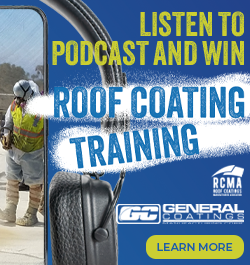Pipe Flashing
« Back To Roofers TalkDoes anyone care to share ideas regarding their pipe flashing techniques for asphalt shingle roofs? Do you do anything besides felt and 3&1 no caulks?
Thanks, Jim. That saved me some measurable effort.
egg Said: The pipe flashings that integrate a metal base with a neoprene collar are notorious failures around here. In optimal conditions, the collar becomes brittle and splits downward from the upper edge. To extend its miserable life we can buy an independent vent shield and slide it down until it covers the old one, usually with a pile of sealant added in between. In the worst cases, it degrades entirely, leaving a large circular gap between the pipe and the base. Northern California is kind of famous for being anti-plastic (which means nothing because its here everywhere) so Im guessing the ambient negative vibes must be undermining all these collars confidence and immune systems. Its true I tell you and like it you may. I dont like the all-plastic vents (neo-poly) because they annoy me because I think they are ugly and they also tend to get squirrelly and split, plus they are too thick to suit me. Jeez Im a snot. lol. I like an all-metal jack with an independent vent shield fastened to the pipe. Copper, lead, galvy, whatever the job calls for. I really dont care for the lead jacks that sleeve the entire pipe and turn down inside like Bills Mayco link shows, but they are well-made and with 4 lb. lead, they certainly do last. We have definitely used them and with confidence. They arent as user-friendly on ABS as on older metal pipes. They just dont brace or tie off the ABS very well so its a fight to get them to fit right with the pipe moving all around on you. 4 lb. lead is pretty stout stuff. They use a lot of 2# lead around here on tile. Does not last. Oxidizes, tears. Bad deal. It is particularly ludicrous when they try to use it as roof-to-wall head flashing. Usually up next to stucco. Lead and uncured mortar dont get along too well. Over the last forty years Ive seen so much failed stuff that when I allow myself to let it in fully it just makes me weak in the knees. Whatever zone were in we find out what works in it and cleave to that. Thats why the survivors survive. That and hard work and luck.
copperman Said: you mean like this.This would give you a little extra back up in high winds. Ole Jack will be soooooo proud of me Arhhhhhh :silly:
I like the looks of that Copperman.
I think I'll start doing something like that using a small patch of ice and water shield or something.
Ive been roofing 30 years and now im finding out lead vents are killing me? Not the 15 years i smoked or drank,nope little old lead vents going to kill me!I guess its to late for me as weve been handling them for years,can someone say bullchit?I guess ill just go tearoff some pitch so i can enjoy life!
The pipe flashings that integrate a metal base with a neoprene collar are notorious failures around here. In optimal conditions, the collar becomes brittle and splits downward from the upper edge. To extend its miserable life we can buy an independent vent shield and slide it down until it covers the old one, usually with a pile of sealant added in between. In the worst cases, it degrades entirely, leaving a large circular gap between the pipe and the base. Northern California is kind of famous for being anti-plastic (which means nothing because it's here everywhere) so I'm guessing the ambient negative vibes must be undermining all these collars' confidence and immune systems. It's true I tell you and like it you may. I don't like the all-plastic vents (neo-poly) because they annoy me because I think they are ugly and they also tend to get squirrelly and split, plus they are too thick to suit me. Jeez I'm a snot. lol. I like an all-metal jack with an independent vent shield fastened to the pipe. Copper, lead, galvy, whatever the job calls for. I really don't care for the lead jacks that sleeve the entire pipe and turn down inside like Bill's Mayco link shows, but they are well-made and with 4 lb. lead, they certainly do last. We have definitely used them and with confidence. They aren't as user-friendly on ABS as on older metal pipes. They just don't brace or tie off the ABS very well so it's a fight to get them to fit right with the pipe moving all around on you. 4 lb. lead is pretty stout stuff. They use a lot of 2# lead around here on tile. Does not last. Oxidizes, tears. Bad deal. It is particularly ludicrous when they try to use it as roof-to-wall head flashing. Usually up next to stucco. Lead and uncured mortar don't get along too well. Over the last forty years I've seen so much failed stuff that when I allow myself to let it in fully it just makes me weak in the knees. Whatever zone we're in we find out what works in it and cleave to that. That's why the survivors survive. That and hard work and luck.
I have seen countless failed neoprene pipe covers, some within ten years. Maybe it is just the area I live in. 75 percent of the roofs I do are 50 year roofs or specialty roofs. On occasion, budget jobs, I also use neoprenes. The best one I have seen are the super neo made by watertight. I embed the bottom of the flange with geocel caulk so nails won't be necessary.
On all my higher end jobs I custom make lead flanges to fit the pipe and the pitch of the roof and make the solder joint facing the back of the flange. I also roll the top edges and never took into the account of possible settling (good tip). The factory lead flange (adjustable pitch) are junk in my opinion. They have a small flange and look cheap and the lead is thin.
you mean like this.
This would give you a little extra back up in high winds.
Ole Jack will be soooooo proud of me Arhhhhhh :silly:
You're starting to worry me, Jim. It would be very easy to seal the underlayment to the pipe where it emerges from the sheathing so if you worry about it just do that. Do yourself a favor and never ever use those neoprene 'no-caulk' jacks. They don't last. The neoprene eats it way before the shingles do.
I was hoping someone had some ideas about how to seal the felt to the pipe, if that is possible. If water is driven up under the shingles above the pipe, it's theoretically possible for the water to enter the attic even if the flashing is properly installed.
Here in TX, it often rains sideways. On steep roofs, this is a real concern for me.
We use the 3-n-1's. Usually Aluminum but sometimes galvanized. I don't like the plastic ones. I like putting shingles under until the black strip doesn't show anymore at the bottom of the flange. After shingling around it we seal the shingles to the flange with roof cement. Also we like to use clear silicone sealant where the rubber part goes around the pipe as sometimes the fit is not good enough to keep out water without being sealed. Also i keep the butt joints ( a.k.a. places where two shingles fit together ) at least a foot away from the pipe flange.
"I'm wondering what everyone does before the flashings are installed? Anything?" Like what? 50% under, 50% over. Nothing else to do.
One of the issues I've run into with lead flashings is that they often get squeezed out of shape. The lead sizes don't fit snug over the PVC pipes. Anyone have a solution other than to handle the flashings with kid gloves?
I had one customer ask me to change all his pipe flashings because they were wrinkled. We took all the lead off and put on the 3&1 galvanized flashings. He was much happier.
I'm wondering what everyone does before the flashings are installed? Anything?
I hear that being alive is hazardous to your health and may cause you to die at some point.
do your guys always wash their hands before eating a snack or taking a smoke? Once that lead is in you it stays there forever, and all they have to do to find it is a simple blood test. who's going to pay the disability for that employee?









-2.png)













